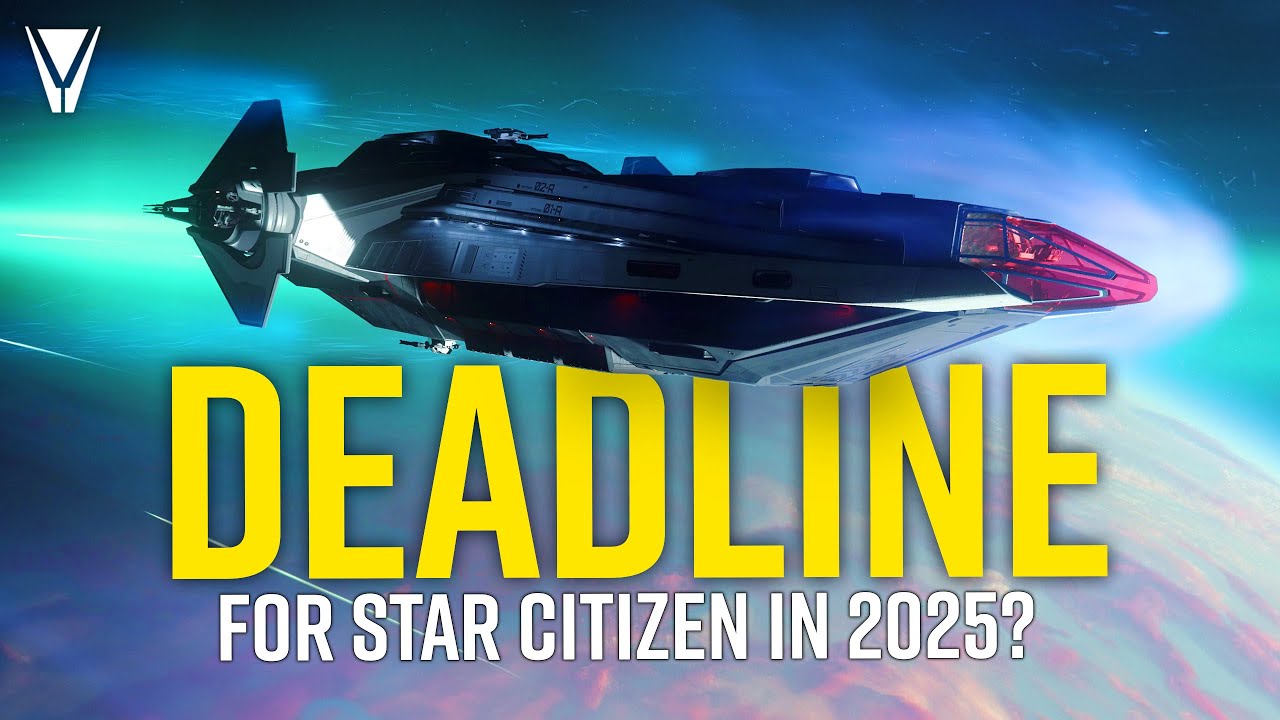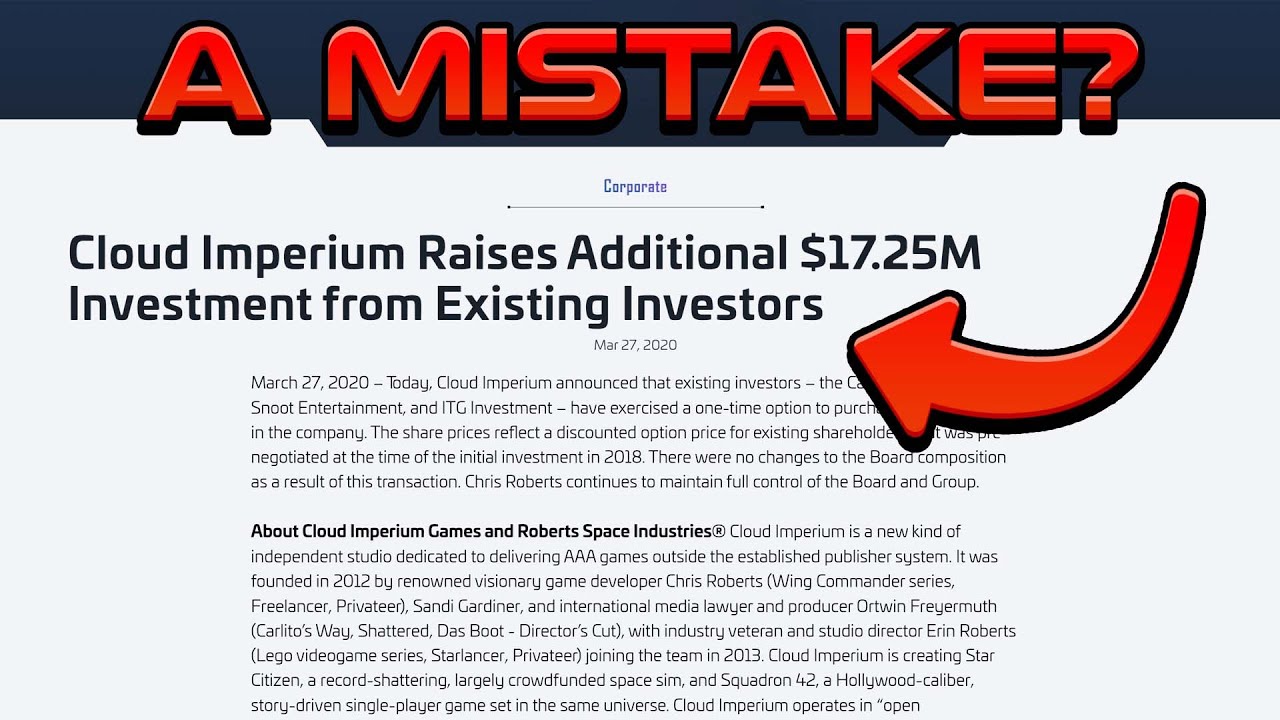Cloud Imperium Games, the developers of Star Citizen and Squadron 42, are facing financial pressure due to potential investor withdrawals starting in 2024, which exceed their current available funds. This situation may impact the development timelines and content of both games, with a potential shift in focus towards completing Squadron 42 first and concerns about meeting deadlines while maintaining quality.
The recent financial documents released by Cloud Imperium Games (CIG), the developers of Star Citizen and Squadron 42, reveal that the company is under financial pressure due to private investments made in 2018. These investments include a significant amount of money that investors can withdraw starting in 2024, with the majority available in 2025. The total amount that could potentially be withdrawn exceeds what CIG currently has on hand, raising concerns about the company’s financial stability.
Despite the financial pressures, CIG claims that investors have agreed not to withdraw funds in 2024 and that any withdrawals must not jeopardize the company’s operations. However, the full details of the agreement between CIG and the investors remain undisclosed, leaving uncertainty about the leverage the investors hold over the company. This financial situation may explain recent announcements about Squadron 42 entering the polishing phase and Star Citizen aiming for a 1.0 commercial release.
The disclosure of potential investor withdrawals by CIG suggests that the company is operating under a timeline, even if the full extent of the pressure is unknown. This timeline could impact the development and release schedules of both Star Citizen and Squadron 42. CIG’s focus on delivering quality products is emphasized, but concerns remain about meeting deadlines and the potential impact on the games’ content and features.
The shift in resources from Star Citizen to Squadron 42 in the past, and the recent mention of a Star Citizen 1.0 release by Chris Roberts, hint at a strategic move to prioritize completing Squadron 42 first. This decision may have implications for the scope and content of the initial Star Citizen release, potentially leading to a more focused launch with fewer features. The reorganization of development teams and the upcoming patch releases will be crucial in determining how CIG navigates the financial pressures and delivers on its promises to backers and investors.
Overall, the financial revelations point to a complex situation for CIG, balancing investor expectations, project deadlines, and game development. The company’s ability to manage these challenges will impact the future of Star Citizen and Squadron 42. While the financial pressures may introduce uncertainties, the reorganization of resources and focus on delivering quality content signal CIG’s commitment to achieving its goals amidst financial constraints.
salt-e-mike reacts:
The video discusses potential deadlines faced by Star Citizen and Squadron 42 due to recent private investments in Cloud Imperium Games, as revealed in UK financial documents. These investments raise questions about financial pressures, potential investor withdrawals, and the impact on development timelines, with a focus on balancing investor expectations and delivering quality gaming experiences.
The video discussed in the transcription delves into the potential deadlines faced by Star Citizen and Squadron 42 due to private investments made in 2018 and 2019 that have recently come to light through UK financial documents. These investments amount to significant stakes in the company, raising questions about potential financial pressures and contingencies associated with them. The expert interviewed in the video, Tony from the Guard Frequency podcast, provides insights into the legal implications of these investments and the obligations they may impose on Cloud Imperium Games (CIG).
The financial documents reveal that investors have the option to withdraw portions of their investments starting in 2024, potentially totaling up to $60 million, which is more than what CIG currently has on hand. However, the documents also indicate that investors have agreed not to exercise these withdrawal options in 2024, showing contentment with the current state of affairs at CIG. The investors, who are also on the board of CIG, have access to detailed financial information and are collecting royalties, indicating a level of involvement and satisfaction with the company’s performance.
The revelations about potential investor withdrawals have implications for the development timelines of Star Citizen and Squadron 42. While Squadron 42 seems to be on track for a 2025 release, Star Citizen’s 1.0 version may face delays or a scaled-down release due to the financial pressures and deadlines imposed by the investment agreements. The video suggests that CIG’s recent focus on Squadron 42 may be a strategic move to prioritize the completion of the single-player campaign, which could be more feasible within the specified timelines.
The video also touches on the potential impact of these deadlines on the quality of the final products, highlighting the balance between meeting investor expectations and delivering a satisfactory gaming experience for backers. The shift of resources from Star Citizen to Squadron 42 reflects a strategic decision to streamline development efforts and potentially expedite the completion of the projects. However, concerns remain about the level of gameplay features and content that will be included in the 1.0 releases and the potential trade-offs between meeting deadlines and delivering a polished gaming experience.
Overall, the video presents a nuanced perspective on the financial pressures and deadlines faced by Cloud Imperium Games, shedding light on the complexities of game development, investor relations, and the balancing act between meeting financial obligations and delivering quality products. The potential implications of these deadlines on the future releases of Star Citizen and Squadron 42 raise questions about the trade-offs between meeting investor expectations and satisfying the gaming community, emphasizing the need for transparency, strategic decision-making, and a focus on delivering engaging and polished gaming experiences.

